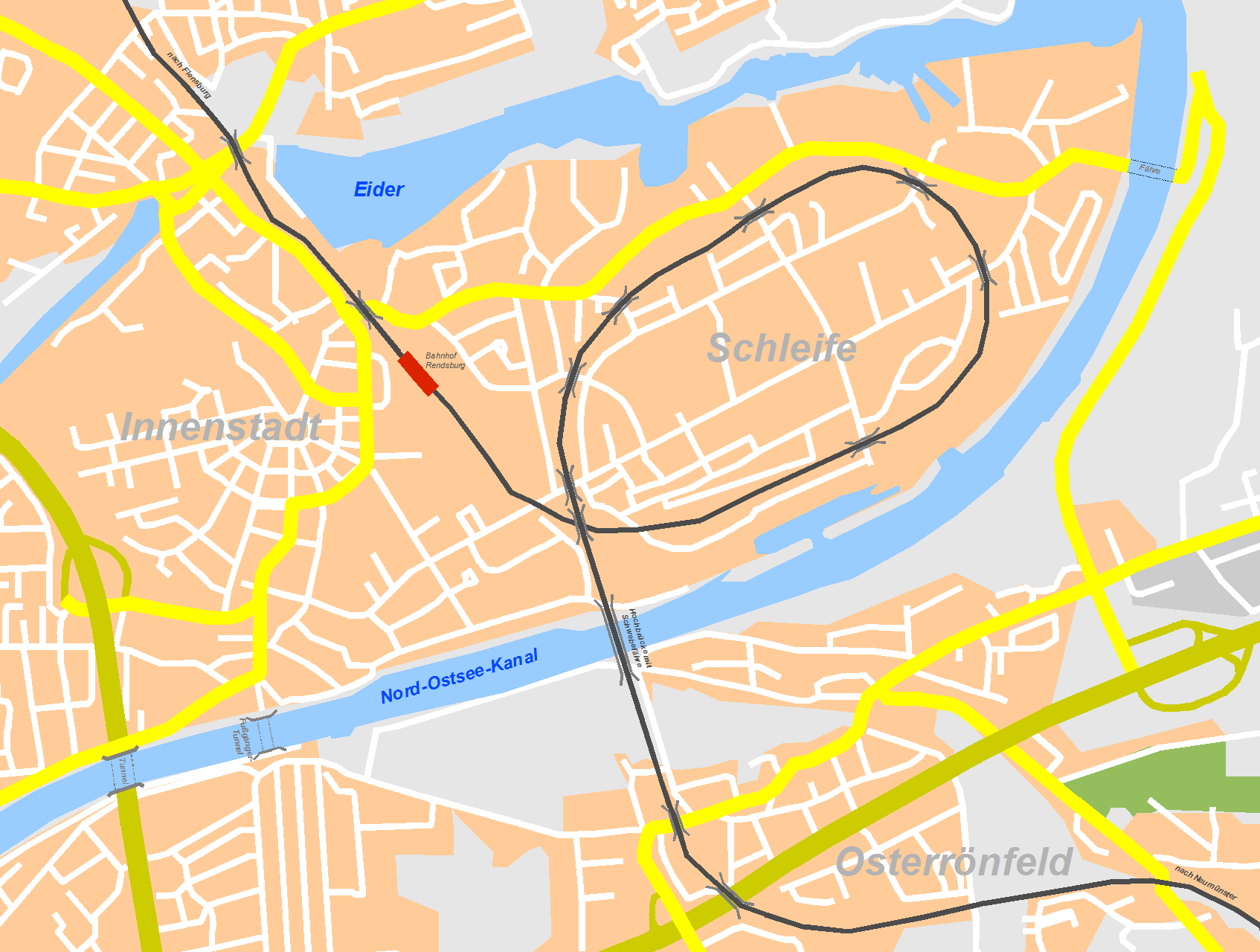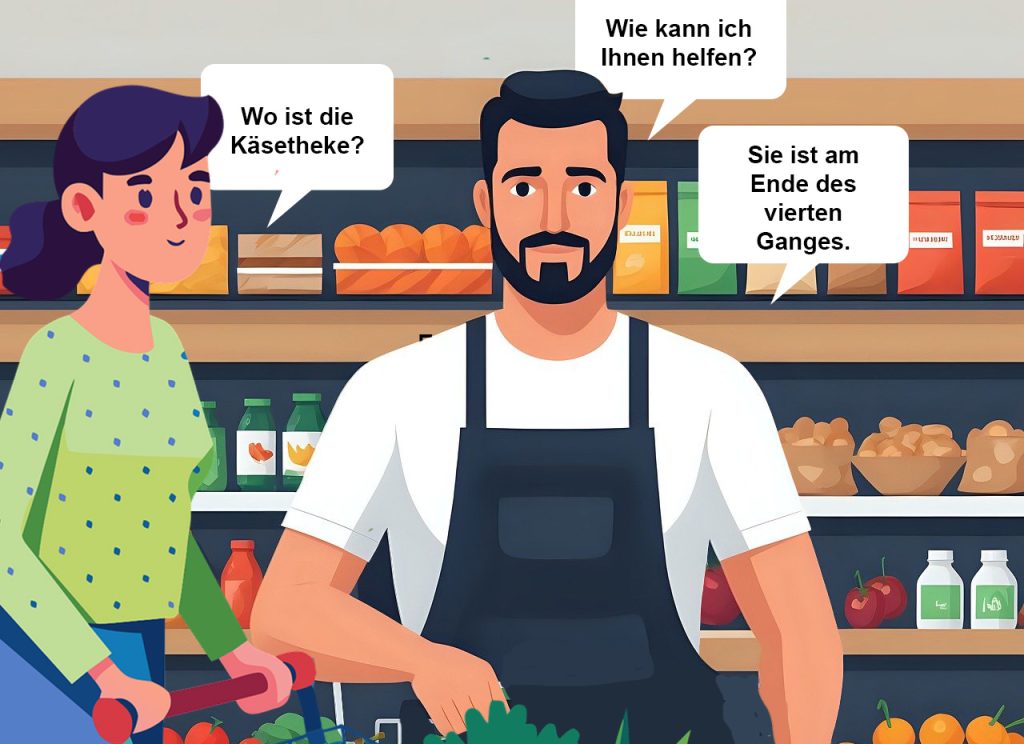6.12 Lebensmittel einkaufen – Grocery shopping

Grüezi!
Zum Aufwärmen machen wir unseren Tagesminiplausch und eine Wiederholung.
Wiederholung
In the previous lesson, you learned how to make a meal plan and write a shopping list with foods listed in relevant categories. Let’s review the food categories.
Was isst du morgen? übermorgen? Answer the questions in your written journal by writing a Einkaufsliste (foods sorted into categories Obst, Gemüse, Fleisch/Fisch, Milchprodukte, anderes, Getränke ) for your planned meals for tomorrow and the day after.
Then record your Einkaufsliste to practice pronouncing the food words.
Lektionsüberblick
Now that you have your shopping list, you will decide where to do your grocery shopping. In this lesson, you will learn about the similarities and differences with grocery shopping in Germany. In the end, you will be able to 1) recognize words relevant for grocery shopping at a Supermarkt, 2) recognize prices (decimal numbers), and 3) ask for help while grocery shopping.
1) der Supermarkt
German-speaking countries are fairly well-known for having robust farmers’ markets (Wochenmärkte ) that often take place twice weekly and a variety of specialty shops for some of the different food groups (Metzgerei = butcher, Bäckeri = backery ). As social trends move away from a full-time stay-at-home parent, the younger generations appreciate the efficiency of being able to buy all of their groceries in one location: im Supermarkt.
Let’s look at some of the words you may need at the Supermarkt. At the same time, you’ll learn about some typical differences to American supermarkets.
Jetzt bist du dran!
2) Dezimalzahlen
The punctuation in German numbers is reversed from English numbers. What does this mean? Decimal numbers are written with a comma instead of a period and thousands/millions/etc. are written with a period instead of a comma.
6,53 = spoken: sechs Komma fünf drei
4.576 = spoken: viertausendfünfhundertsechsundsiebzig
With currency (no plural form with currencies)
| 7,33 € | = | spoken: sieben Euro dreiunddreißig | informal: sieben dreiunddreißig |
| $4.99 | = | spoken: vier Dollar neunundneunzig | informal: vier neunundneunzig |
| 1.500,00 € | = | spoken: eintausendfünfhundert Euro |
Units of measurements
8,2 m = spoken: acht Meter zwanzig or acht Komma zwei Meter
Percentages
1,9% = spoken: eins Komma neun Prozent
Jetzt bist du dran!
Norddeutschland im Blickpunkt

Die Rendsburger Hochbrücke ist eine zwischen 1911 und 1913 erbaute Stahlkonstruktion in Rendsburg (Schleswig-Holstein). Sie überspannt den Nord-Ostsee-Kanal und dient als Eisenbahnbrücke, außerdem trägt sie eine angehängte Schwebefähre für den Fußgänger- und Fahrzeugverkehr. Sie ist Wahrzeichen der Stadt Rendsburg und eines der bedeutenden Technikdenkmäler in Deutschland. Sie ist 2.486m lang und war 99 Jahre lang die längste Eisenbahnbrücke in Deutschland. Um den auf Bodenhöhe liegenden Bahnhof Rendsburg zu erreichen, der weniger als einen Kilometer von der Hauptbrücke entfernt liegt, wird die Bahnstrecke auf dem nördlichen Kanalufer in einer großen 360-Grad-Schleife geführt.

The Rendsburg High Bridge is a steel viaduct built between 1911 and 1913 in Rendsburg (Schleswig-Holstein).The railway bridge crosses the Kiel Canal and also serves as a transporter bridge with a “Schwebefähre” (suspension ferry) for foot and vehicle traffic. It is Rendsburg’s landmark and is one of the significant technical monuments in Germany. It is 2,486m long (1.5mi) and was the longest bridge of its kind in Germany for 99 years. To serve Rendsburg station, situated at ground level less than 1km from the main bridge, the railway line is routed through a large 360-degree loop on the north bank of the canal.
3) Beim Einkaufen um Hilfe bitten
When you are at the grocery, you may not be able to find everything right away. Listen to and read along with the following scenario. Can you tell what each person is saying? Check your comprehension below.
 |
Jetzt bist du dran!
Zum Schluß

*As you conclude this lesson, don’t forget to check Canvas!*

Media Attributions
- 1010-1020 banner long large reduced
- 6.12 im supermarkt hilfe
- Private: confidence scale_large horizontal_updated

